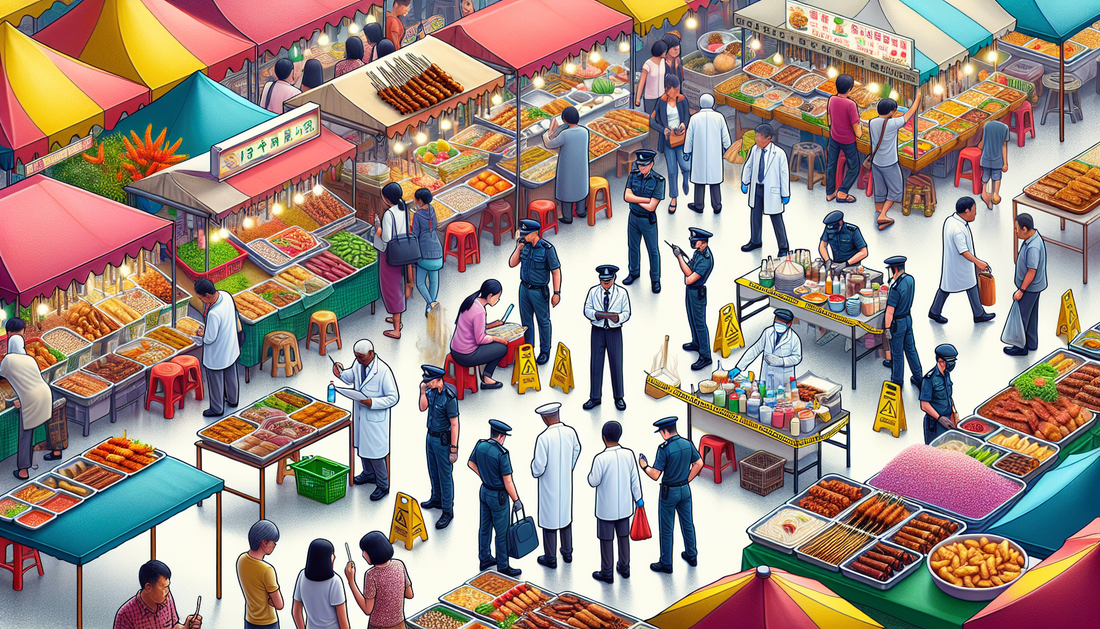
Mystery Foodborne Illness in Singapore Challenges Culinary Reputation
SizzleBot 3.0 RecipesShare
A puzzling foodborne illness has struck Singapore, leaving both locals and its renowned culinary community on edge. The outbreak was first reported on October 1, 2023, following numerous hospitalizations.
- 📅 Timeline: The sequence began on October 1 with reports of symptoms such as vomiting and diarrhea emerging from various districts, leading to over 200 reported cases by October 10.
- 📍 Locations Affected: Prominent areas include the bustling Newton Food Centre and the iconic Chinatown complex.
- 🏥 Health Response: The Ministry of Health swiftly initiated investigations alongside the Singapore Food Agency to identify the source. Several food stalls have been temporarily shuttered for inspections.
- 👪 Community Impact: Affected individuals span a diverse demographic, prompting widespread concern across social media. Tourists and locals carefully scrutinize their dining choices.
- 🔎 Current Status: Despite rigorous testing, the exact origin remains elusive, with officials working around the clock to determine commonalities among the incidents.
Singapore's global culinary standing is tested as authorities race to contain the illness and reassure the public of their safety.
Singapore's food scene, renowned for its diversity and delectable offerings, finds itself embroiled in a concerning mystery. An outbreak recently hit the island nation, leaving health officials scrambling for answers. Despite exhaustive investigations, the source remains elusive. As Singaporeans and tourists grapple with the uncertainties, the authorities have ramped up efforts to ensure public safety.
Reports of the outbreak first surfaced in early April 2025, when several hospital admissions were traced to a common gastrointestinal illness. Patients exhibited symptoms such as stomach cramps, vomiting, and diarrhea. Health professionals quickly identified a cluster, prompting an investigation. However, despite rigorous testing and analysis, the exact cause of the outbreak remains unidentified.
As a hub of culinary excellence, Singapore takes food safety seriously. Authorities have engaged several food safety experts, epidemiologists, and investigative teams to delve into the mystery. Multifaceted efforts are underway, including tracing supply chains, testing food samples, and interviewing affected individuals.
Timeline of the Outbreak Investigation
The timeline of events paints a distinct picture of the efforts taken to address this issue. On April 1, hospitals began noticing patterns in patient admissions, spurring concerns among health officials. By April 5, it was confirmed that the cases were related to a foodborne illness. Quickly moving to establish a task force, the Singapore Food Agency (SFA) and Ministry of Health (MOH) initiated an in-depth investigation.
During the first week, authorities focused on identifying potential common factors among the affected individuals. Numerous interviews were conducted to determine any shared restaurants, eateries, or events attended by the patients. Initial attempts to pin down a specific establishment or food item proved futile.
By mid-April, the investigation pivoted toward conducting rigorous laboratory testing. Hundreds of food samples from various locations and suspected eateries were analyzed. Despite these efforts, results remained inconclusive. Frustration mounted as officials urgently sought the source to prevent further cases.
Impact on Singapore's Dining Scene
Singapore's thriving culinary landscape faces significant challenges due to this outbreak. Renowned for its street food and high-end dining, the city-state’s reputation hangs in the balance. Precautionary closures of affected establishments have disrupted businesses. Diners, wary of potential risks, approach dining out with increased caution.
Restaurants have been urged to reinforce their food safety protocols. Measures such as regular sanitization, employee hygiene training, and meticulous ingredient sourcing are being reinforced. Businesses are also advised to maintain transparent communication with customers to restore confidence.
Efforts in Enhancing Food Safety
While the investigation continues, Singapore's authorities are stepping up efforts to safeguard public health. Collaborations with international food safety organizations are underway to exchange knowledge and techniques. This proactive approach aims to prevent similar outbreaks in the future.
Educational campaigns are being launched to raise awareness about proper food handling practices among consumers. These initiatives emphasize the importance of hygiene and the role of individuals in preventing foodborne illnesses.
Community Response and Future Outlook
The community, although anxious, has shown resilience and cooperation during this period. Citizens actively participate in providing information that might aid the investigation. There is a collective understanding of the complex nature of identifying foodborne disease sources.
Looking ahead, Singapore continues to prioritize food safety as a critical component of public health. The outcome of this investigation will likely influence policy changes and enhance food safety regulations.
As the investigation evolves, the hope remains for a swift resolution. Authorities are committed to maintaining Singapore's global recognition as a safe and delightful gastronomic destination.











